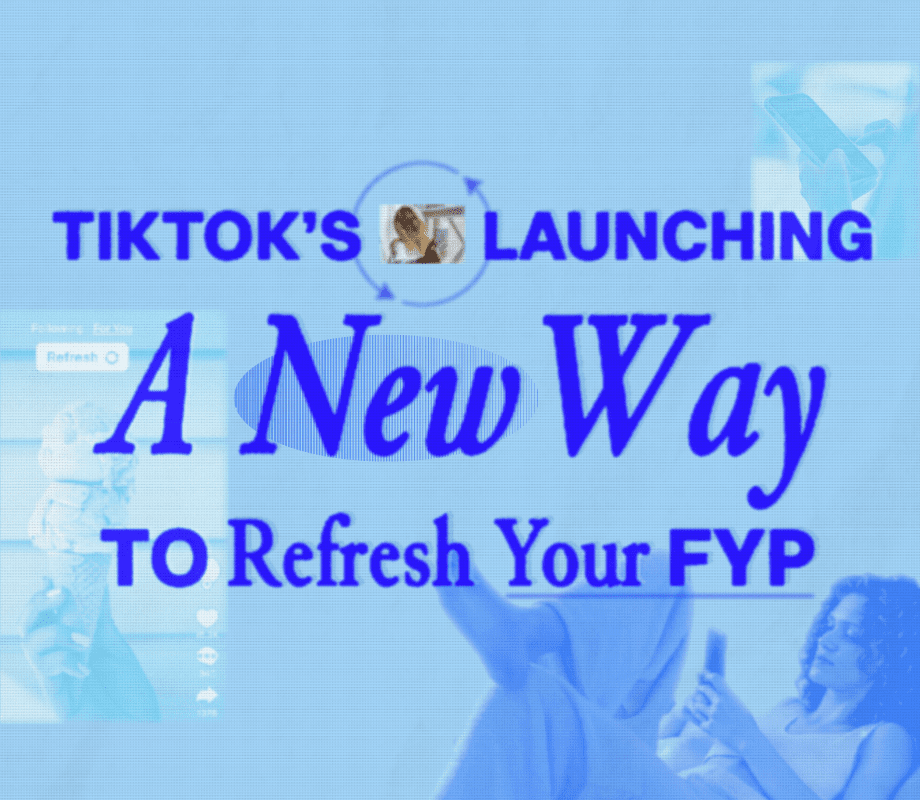Whether you have worked as a coach already or are looking to dive right into it, online coaching offers up plenty of benefits for both you and your potential future clients. The best part is? No specialization needed! You can launch an online coaching business within any niche.
You can work with clients worldwide, be flexible with your hours, and get started with as little as a laptop and internet connection.
That said, while starting an online coaching program is simple, the job itself isn’t always easy. At the very least, you’ll need an in-demand idea that you have the skills to realize. Plus, finding new clients and scaling your business can be just as challenging online as it is in the offline world.
In this guide we cover everything you need to know to coach online, from writing a business plan to growing your audience.
Know exactly what you’re looking for? Jump to it here!
Why start an online coaching business?
As Simon Sinek said in his seminal book Start With Why (and his popular TED talk), “People don’t buy what you do, they buy why you do it.”
It’s a good practice to ask yourself first: Why do you want to offer coaching services online?
While everyone is going to have their own unique reason, there are also plenty of universal benefits to running coaching programs on the web.
-
It’s profitable
Virtual programs allow you to spend more time with your clients rather than commuting around, meaning you can fit more clients into your schedule. Every session equals more revenue.
-
It’s more scalable than in-person coaching
Group coaching classes become accessible and easy to launch, so you can accommodate more people at more times. You’ll also leverage online coaching platforms that automate many of your everyday tasks like meeting scheduling and content distribution to save even more time.
-
You can coach clients from around the world
Delivering coaching sessions online allows you to tap into markets with the highest levels of consumer spending internationally, outside of just your local community. The countries with the highest number of learners include the United States, India, Mexico, Brazil, and China.
-
It can generate passive income
You can turn your expertise into on-demand coaching programs that thousands of people can take and pay for on their own time. You can do the work once, record yourself while doing it, and then earn passive income by selling it as a course for as long as the course is active online.
-
The cost to acquire new leads is significantly less
Many coaches rely on paid ads and in-person events to generate a high volume of leads quickly. Or, they route for word of mouth referral services that are slow to generate leads. Online coaching provides more marketing opportunities for scalable, affordable lead generation.
-
The demand for online coaching services is high
As the nature of our work changes faster than ever before, education and learning online have become increasingly important. This means the demand for coaching has grown too. Online coaching is expected to be an $11.7 billion market by 2032!
-
You can leverage thought leadership for skeptical buyers
With in-person offerings, you’re limited to the brochures at the front desk. And those only appeal to people that have actually stepped foot in your office. Taking a virtual approach gives you more educational opportunities to show off your abilities via socials or websites. This helps build trust with otherwise skeptical leads.
How to start an online coaching business: 8 steps
Regardless of what type of coach you want to be, you can follow the same eight steps to create a successful online coaching business. The key here is to plan in advance and have a strategy mapped out before you dive into execution.
-
Work on your coaching skills
All online coaches, from business coaches to health coaches, essentially use the same set of coaching tools and rely on their core competencies to set them apart. Janelle Scott, P. Eng shared that there are 6 elements that combine together to create “coaching excellence” including:
- Foundational knowledge and training
- Deliberate, focused practice
- Natural empathy and emotional intelligence
- Lived experiences and overcome challenges
- Continuous learning and adaptation
- Regular reflection and refinement
Start by assessing your area of expertise and your unique specialization (e.g. online fitness coach vs. online bodybuilding coach). Ask yourself how your skillset can be improved.
Soft skills are an important part of emotional intelligence, reflection, and growth. Here are a few that you should prioritize practicing for your coaching sessions:
- Being empathetic
- Knowing how to listen
- Staying calm in stressful situations
- Recognizing your biases
- Offering emotional support
- Seeing client’s potential
- Inspiring confidence
For more information, read our previous article on 6 proven methods for improving your coaching skills.
-
Draft up a business plan
Even if coaching is not your primary occupation and you’re just working on it part-time in the evenings, you still need to have a business plan. Otherwise, how will you know what you’re working towards? How will you measure your progress?
First, you need to define your audience.
- Who are you trying to reach and why?
- Why do they need your service?
- How much are they willing to pay?
Second, research your niche.
- Who are your competitors?
- How are you different from them?
You can use this coaching business model canvas to map your unique value proposition, the way you make money, and how you deliver your coaching services.
Jennifer Kem, brand building expert and CEO of the Master Brand institute, recommends getting as specific as possible on the type of people your area of expertise serves.
“The more specific you are, the easier it is to identify what key areas you need to communicate to attract clients. An online fitness coach who specializes in helping people who were injured and are getting their health back on track is very different from someone who helps elite, amateur-level athletes increase their dynamic range of motion. Both are fitness coaches which means they cover the same concepts however in practice, these are two very different things.”
– Jennifer Kem, CEO of Master Brand Institute
-
Plan your coaching program
Once you have a business plan, you should create a coaching framework that will outline all the processes you will follow in your coaching practice.
To maximize your profits, you should consider two coaching styles for your framework:
- A scalable, on-demand, one-to-many group coaching online course presenting the fundamentals of what you know
- Exclusive, one-to-one, “executive” coaching sessions that are priced high and aimed at solving the unique problems of your select audience members
Tip: Don’t rush into pouring all of your knowledge into your first online course (or video). It’s more efficient and effective to deliver your coaching in smaller chunks. So instead of a two-hour masterclass, try multiple 10-minute segments.

Plan for customer loyalty
With your one-to-one coaching, it’s good to offer one or two trial sessions, and then require a minimum commitment (e.g. six or 12 coaching sessions) to lock in revenue and reduce churn.
A best practice that Jennifer Kem recommends is to sell the outline of your program then to build it out as you work with people. She believes if you do this with ten different clients, it’ll give you a thorough understanding of what clients need in order to find success.
-
Build your brand
There’s nothing more important at the beginning of your online coaching career than standing out. You need people to talk about you, and you have to give them a reason to do so.
Your market research will help you formulate a brand that appeals to the preferences of your target audience. But it should also display your personality and unique coaching approach. This helps leads and clients feel compelled more to your brand than any other because of specific connection points, like your history in the field or focus on client care for example.
With more information on the demand side of your business, you can position yourself and start building your brand in a way that speaks directly to your audience. Make sure that your brand is consistent and expressed the same way across all platforms, including your website, online courses, social media, and other marketing channels.
Your personal brand = consistency × standing out.

-
Set up your online coaching service
If you find yourself manually copy-pasting things and spending time on repetitive admin tasks, you probably just haven’t found the right tools to simplify your workflow.
Here are a few types and examples of online tools used by online life coaches, business coaches, personal training coaches, and others.
- Video conferencing platform. In the world of online coaching, you need a reliable video conferencing tool that syncs with your calendar, has chat, allows you to share your screen, exchange documents, record sessions, etc. This will help you make sure your day-to-day practice runs smoothly and you keep your clients on track. A few popular apps in this category are Google Meet (it’s free!) and Zoom.
- Online coaching or learner management platform. Based on your coaching framework, the other coaching channel you might need is an online learning platform that helps you create group coaching courses. Some key considerations here are price, ease of use and the ability to customize your platform (e.g. add your branding). Thinkific is an easy to use platform for building and marketing online courses. You don’t need any coding or tech skills to start using it & can get started in less than one day.
- Marketing channels. Think about the best way to connect with your audience. Are they using Twitter, Facebook, Instagram, LinkedIn, or email? Managing multiple social media channels can quickly become overwhelming, so you may want to use a centralized social media management app for scheduling posts and replying to comments, such as Buffer or Hootsuite.
- Mass communication channel. Email newsletters are also a great way to convert more followers into customers. You can ask your audience to sign up for email updates and then send them occasional supplemental materials or offer discounts to keep them engaged. Mailchimp is the leading tool in this space, perfect for anyone from personal trainers to online weight loss coaches.
-
Price your coaching program
Income is the main driver of your business.
When it comes to pricing your coaching sessions, do some research to find out the average rate in your niche. Then pick a number that’s 10–20% higher than that and use it as a benchmark for your pricing. If you find that the number you landed on is too high or too low, you can adjust your pricing strategy as you go.
Remember that you don’t charge customers to cover your costs — you charge customers based on the value you provide to them.
-
Find customers
Looking for quality clients is something you’ll continue to do for as long as you have your coaching practice. To get a steady flow of clients, you should think of your marketing in terms of a conversion funnel.
- Top of the funnel awareness building happens through social media posts, online ads, podcasts appearances, conference presentations, and other platforms where your audience remains passive. The goal is to educate about why online coaching is valuable.
- Middle of the funnel engagement and consideration tactics include sending email newsletters and distributing free materials (e.g. PDF ebooks in exchange for email address registration on your website) to educate your audience about different online coaching solutions.
- Bottom of the funnel is where conversions (a.k.a. sales) actually happen. It’s your online course demo and your free 30-minute online coaching consultation, at the end of which you direct your audience to make a purchase. Keep the focus on educating why your offering is better than anything else, for that specific buyer profile.
Always, always maintain reporting and optimization strategies to make the most value out of every campaign. Don’t be afraid to pivot early when something isn’t working.
Not enough new social media followers? Try appearing as a guest on someone’s podcast.
Not enough email subscribers? Write a new guide to share in exchange for email collection.
-
Collect feedback and improve
No process comes full circle if you don’t collect feedback to improve it.
First, you need a community of peers who you can discuss ongoing issues with and help each other resolve them. Try looking on LinkedIn, Reddit, Facebook Groups, or industry-specific slack channels.
Second, set up a feedback loop with your clients. Whether they take your courses or meet with you one-on-one, you can send them short and anonymous surveys to rate the quality of your content and suggest ideas for improvement.
Start your own online community if you have to. Host peers, mentees, or anyone who may be a positive contributor.
Make sure to set aside some time each week to review new feedback coming in and figure out how you can apply it to your work moving forward.
Starting an online coaching business: Frequently asked questions
Leveraging the information above, you can quickly start a real online coaching business. However, you might still have a few questions. Here are the answers to the most popular ones.
-
How much money do online coaches make?
Since online coaching is a service that cuts through multiple industries, the compensation varies a lot.
For example, an online bodybuilding coach might not spend as much time with you as they would in-person at the gym, so they might make less for actual coaching sessions but make up for it on custom programming.
Online business coaches, especially executive coaches, on the other hand, tend to make much more — on average, hundreds of dollars an hour. That’s because their coaching is tied to high-value transactions in the business as a direct result of your lessons.
Your rates would also depend on where most of your target audience lives. In the US, you can expect to charge at least $50 an hour. Multiply that by the number of hours worked, and you have your gross income.
Related: How Much Do Life Coaches Make?
-
How do I offer a coaching service online?
To be a professional coach online, all you need is a video conferencing tool (e.g. Zoom) and maybe a scheduling app (e.g. Calendly) that you can integrate into your website. For more, read our 2022 guide to essential online coaching tools and platforms.
It would also be handy to have a way to organize multiple learner’s programs and deliver digital learning content to them from one platform, like Thinkific.
-
How do I price my online coaching program?
The way you price your coaching services should correlate with the amount of value you provide (as perceived by the client). If you’re not sure about how to value your work yet, start with the industry average rate and add anywhere from 10-20% to test the waters.
-
How do I get more coaching clients?
By far, the best way to get new clients is through referrals from your existing happy clients or alumni. If you don’t get referrals organically, reach out and ask for them. Ask to be introduced to anyone who might benefit from your services — then sell your services to them!
If you’re brand new, don’t be shy of testing some digital marketing strategies. Scroll up to step #7 for some ideas.
-
How can I generate passive income as an online coach?
You only have so many hours in a day for one-to-one coaching. Eventually, you want to get to a point where most of your revenue comes from services that you don’t have to actively participate in every time.
-
Should I offer group coaching or one-on-one coaching?
This decision is entirely up to your preferences and what you see is generating the highest demand from your target audience. Start with one or the other, and add the second alternative after you have strong foundations with the first method. Keep in mind that your pricing and session structure should differ for each, with group sessions being more affordable and focused on teamwork activities.
-
What is the first step to get started as an online coach?
Online courses are a perfect way to build passive income from your coaching practice. Create your own online course using Thinkific today and see how easy it is to turn your knowledge into profit. Starting with Thinkific is fast and free. So challenge yourself to do something new that will pay off handsomely in the long run.

This blog was originally published in April 2022, it’s since been updated in November 2024 to include the newest information.











